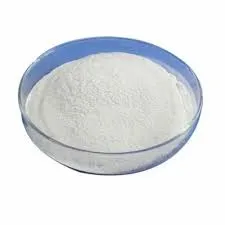
Dec . 17, 2024 15:24 Back to list
grades of hpmc
Understanding Grades of HPMC A Comprehensive Overview
Hydroxypropyl Methylcellulose (HPMC) is a versatile and widely utilized cellulose ether that has garnered significant attention across various industries, particularly in pharmaceuticals, food, and construction. The unique properties of HPMC make it an ideal choice for applications ranging from drug delivery systems to food additives and construction materials. Understanding the different grades of HPMC is crucial for selecting the appropriate type for specific applications.
What is HPMC?
HPMC is a chemically modified form of cellulose, wherein some of the hydroxyl groups of cellulose have been substituted with hydroxypropyl and methyl groups. This modification enhances its solubility in water and increases its functionality. The degree of substitution and the molecular weight of HPMC can vary, leading to the creation of different grades, each tailored for specific uses.
Grades of HPMC
The primary variation in HPMC grades is determined by factors such as viscosity, substitution level, and intended application. Generally, HPMC is classified into three broad categories
1. Low Viscosity HPMC This grade is characterized by a low molecular weight, resulting in a lower viscosity when dissolved in water. Low viscosity HPMC is primarily used as a thickening agent in solutions, personal care products, and paints. It provides a smooth texture and good spreadability, making it a popular choice in the cosmetic industry.
2. Medium Viscosity HPMC With a moderate molecular weight, medium viscosity HPMC strikes a balance between thickness and flowability. This grade is commonly used in pharmaceutical formulations as a controlled-release polymer. It forms hydrogels, allowing for the gradual release of active ingredients, which is particularly beneficial in tablet formulations.
grades of hpmc

3. High Viscosity HPMC High viscosity HPMC has a higher molecular weight, making it ideal for applications that require significant thickening and stabilization. This grade is often found in construction materials, where it helps improve the workability of cement, mortar, and tile adhesives. Additionally, it is used in the food industry as a fat replacer and emulsifier due to its ability to retain moisture and enhance texture.
Applications of HPMC Grades
The diverse grades of HPMC lend themselves to a myriad of applications across different fields
- Pharmaceuticals In drug formulations, HPMC is utilized as a binder, thickener, and controlled-release agent. Its biocompatibility and low toxicity make it suitable for use in various forms, including tablets, capsules, and topical gels.
- Food Industry HPMC functions as a food additive, improving texture, stability, and moisture retention in products like sauces, dressings, and dairy items. It is also used as a vegan substitute for gelatin in various food applications.
- Construction HPMC is integral in construction for enhancing the performance of adhesives, plasters, and joint compounds. It enhances the workability and adhesion of these materials while improving water retention, which is crucial for proper curing.
Conclusion
The grades of HPMC are crucial to its functionality across diverse applications, each grade serving tailored purposes that enhance product quality and performance. By understanding the characteristics and applications of each HPMC grade, industries can make informed decisions that optimize the efficacy of their products. As research continues to evolve, innovations in HPMC grades will likely lead to even more applications, reinforcing its role as a fundamental component in various sectors. Whether in pharmaceuticals, food processing, or construction, HPMC remains a vital ingredient that exemplifies versatility and functionality.
-
Versatile Hpmc Uses in Different Industries
NewsJun.19,2025
-
Redispersible Powder's Role in Enhancing Durability of Construction Products
NewsJun.19,2025
-
Hydroxyethyl Cellulose Applications Driving Green Industrial Processes
NewsJun.19,2025
-
Exploring Different Redispersible Polymer Powder
NewsJun.19,2025
-
Choosing the Right Mortar Bonding Agent
NewsJun.19,2025
-
Applications and Significance of China Hpmc in Modern Industries
NewsJun.19,2025







